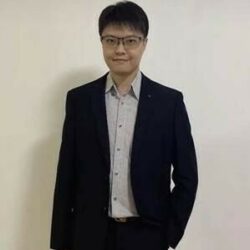Dr. Fa-Hsyang Chen
Manager of TFT Technology Development | Visionox
Abstract
Progress on LTPS Backplane Technology for Next Generation OLED Display Panels
OLED displays today are rarely seen in tablets, laptops, and monitors. A significant adoption of OLED displays is predicted in a relatively stable IT market. This was underlined by several announcements and first invests into new GEN8 fabs for OLED IT panels. For the move from existing GEN6 to GEN8 manufacturing equipment needs to be ready and available right now.
For several reasons high-resolution state-of-the art mobile devices are based on Low Temperature Polysilicon (LTPS) and in combination with Oxide named LTPO. In fact, today all OLED IT panels are based on LTPS and there are good reasons for it like lower power consumption, smaller TFT´s, brightness, lifetime, and long-term stability if using a tandem OLED structure. The first layer of a complex OLED stack structure builds the foundation of the entire display and therefore is a critical layer that could already determine the later performance and yield of the entire display. The UV Linebeam systems are proven in mass production for decades and are the “process of record” in the display industry for high resolution OLED displays. Our UV Linebeam systems are capable of processing up to a GEN8.7 OLED panel already now.
This presentation by Visionox, Coherent & AP Systems focuses on the pivotal technological innovations in the next-generation AMOLED manufacturing process, particularly the commercialization achievements of the Solid Laser Annealing (SLA) technology. Through strategic partnerships with Coherent and AP Systems, Visionox successfully applied SLA technology to the AMOLED mass production line for the first time in the industry, setting a significant milestone that goes beyond the limitations of display manufacturing technology.
The new technology was seamlessly integrated into Visionox's large-area OLED panel mass production line, allowing for cost-effective facility upgrades while maintaining the existing production infrastructure. This enables the high levels of automation and productivity needed for large OLED panel production and will contribute to upgrades across the entire industry. Through this announcement, the three parties aim to present the potential and value of SLA technology as the next-generation manufacturing standard for the display industry. The PYTHON laser and SLA crystallization system will establish themselves as core technologies that meet market demands for larger screens, higher performance, and superior user experiences, positioning Visionox as a global technology leader driving OLED manufacturing innovation supported by AP Systems and Coherent.
BIOGRAPHY
Fa-Hsyang Chen was born in Taipei, Taiwan. He received the Ph.D. Degree in electronics engineering from Chang Gung University (CGU), Tao-Yuan, Taiwan in 2014.
He has published more than 30 SCI papers and conference papers including metal oxide TFT, LTPS TFT, flash memory and high-k material. He also has published more than 40 TFT-related patents. He has been engaged in the research and development of TFT backplane technology for AMOLED displays for 11 years. He joined Visionox in 2018 and currently serves as a TFT backplane technology expert. He is responsible for leading the technology development teams in TFT backplane technologies for next generation IT AMOLED products.